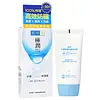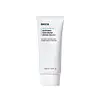What's inside
What's inside
 Key Ingredients
Key Ingredients

 Benefits
Benefits

 Concerns
Concerns

No concerns
 Ingredients Side-by-side
Ingredients Side-by-side

Cyclopentasiloxane
EmollientWater
Skin ConditioningZinc Oxide
Cosmetic ColorantPEG-10 Dimethicone
Skin ConditioningDimethicone
EmollientMethylpropanediol
SolventTitanium Dioxide
Cosmetic ColorantSucrose Palmitate
EmollientVinyl Dimethicone/Methicone Silsesquioxane Crosspolymer
Silica
AbrasivePolyglyceryl-3 Polydimethylsiloxyethyl Dimethicone
Skin ConditioningPEG-9 Polydimethylsiloxyethyl Dimethicone
EmulsifyingMagnesium Sulfate
Hydrated Silica
AbrasiveTrimethylsiloxysilicate
EmollientDisteardimonium Hectorite
StabilisingPentylene Glycol
Skin ConditioningTriethoxycaprylylsilane
Hydrogenated Polyisobutene
EmollientSorbitan Isostearate
EmulsifyingButylene Glycol
HumectantAluminum Hydroxide
EmollientHydrogen Dimethicone
Propylene Carbonate
SolventInonotus Obliquus Extract
Skin ConditioningBisabolol
MaskingTheobroma Grandiflorum Seed Butter
Skin ConditioningCitrus Sinensis Peel Extract
PerfumingBiosaccharide Gum-1
HumectantYeast Polysaccharides
Skin ConditioningCitrus Limon Peel Oil
MaskingPelargonium Graveolens Flower Oil
MaskingCitrus Aurantium Bergamia Fruit Oil
MaskingElettaria Cardamomum Seed Oil
MaskingEctoin
Skin ConditioningHydrolyzed Sodium Hyaluronate
Skin ConditioningNiacinamide
SmoothingPhytic Acid
Sodium Hyaluronate
HumectantCaprylic/Capric Triglyceride
MaskingGlycerin
HumectantPolianthes Tuberosa Extract
MaskingCananga Odorata Flower Oil
MaskingZingiber Officinale Root Extract
MaskingSodium Lauroyl Lactylate
Emulsifying1,2-Hexanediol
Skin ConditioningLaminaria Ochroleuca Extract
Skin ConditioningPhenoxyethanol
PreservativeMoringa Oleifera Seed Extract
Skin ConditioningTheobroma Cacao Seed Extract
AntioxidantBiosaccharide Gum-4
Skin ConditioningCeramide NP
Skin ConditioningDisodium Phosphate
BufferingCeramide AP
Skin ConditioningCholesterol
EmollientCitric Acid
BufferingPhytosphingosine
Skin ConditioningMethylparaben
PreservativeCarbomer
Emulsion StabilisingXanthan Gum
EmulsifyingCeramide EOP
Skin ConditioningCyclopentasiloxane, Water, Zinc Oxide, PEG-10 Dimethicone, Dimethicone, Methylpropanediol, Titanium Dioxide, Sucrose Palmitate, Vinyl Dimethicone/Methicone Silsesquioxane Crosspolymer, Silica, Polyglyceryl-3 Polydimethylsiloxyethyl Dimethicone, PEG-9 Polydimethylsiloxyethyl Dimethicone, Magnesium Sulfate, Hydrated Silica, Trimethylsiloxysilicate, Disteardimonium Hectorite, Pentylene Glycol, Triethoxycaprylylsilane, Hydrogenated Polyisobutene, Sorbitan Isostearate, Butylene Glycol, Aluminum Hydroxide, Hydrogen Dimethicone, Propylene Carbonate, Inonotus Obliquus Extract, Bisabolol, Theobroma Grandiflorum Seed Butter, Citrus Sinensis Peel Extract, Biosaccharide Gum-1, Yeast Polysaccharides, Citrus Limon Peel Oil, Pelargonium Graveolens Flower Oil, Citrus Aurantium Bergamia Fruit Oil, Elettaria Cardamomum Seed Oil, Ectoin, Hydrolyzed Sodium Hyaluronate, Niacinamide, Phytic Acid, Sodium Hyaluronate, Caprylic/Capric Triglyceride, Glycerin, Polianthes Tuberosa Extract, Cananga Odorata Flower Oil, Zingiber Officinale Root Extract, Sodium Lauroyl Lactylate, 1,2-Hexanediol, Laminaria Ochroleuca Extract, Phenoxyethanol, Moringa Oleifera Seed Extract, Theobroma Cacao Seed Extract, Biosaccharide Gum-4, Ceramide NP, Disodium Phosphate, Ceramide AP, Cholesterol, Citric Acid, Phytosphingosine, Methylparaben, Carbomer, Xanthan Gum, Ceramide EOP
Water
Skin ConditioningZinc Oxide
Cosmetic ColorantCyclohexasiloxane
EmollientButyloctyl Salicylate
Skin ConditioningPropanediol
SolventPropylheptyl Caprylate
EmollientDicaprylyl Ether
EmollientCaprylyl Methicone
Skin ConditioningPolyglyceryl-3 Polydimethylsiloxyethyl Dimethicone
Skin ConditioningNiacinamide
SmoothingStellaria Media Extract
Skin ConditioningHelianthus Annuus Flower Extract
Skin ConditioningVaccinium Vitis-Idaea Fruit Extract
AntioxidantAloe Ferox Leaf Extract
Skin ConditioningCentella Asiatica Extract
CleansingDisteardimonium Hectorite
StabilisingMagnesium Sulfate
Triethoxycaprylylsilane
1,2-Hexanediol
Skin ConditioningMethyl Methacrylate Crosspolymer
Polyglyceryl-2 Dipolyhydroxystearate
Skin ConditioningLauryl Polyglyceryl-3 Polydimethylsiloxyethyl Dimethicone
Skin ConditioningButylene Glycol
HumectantGlyceryl Caprylate
EmollientCaprylyl Glycol
EmollientEthylhexylglycerin
Skin ConditioningAdenosine
Skin ConditioningLactobacillus Ferment
Skin ConditioningTocopherol
AntioxidantGlyceryl Glucoside
HumectantGlycerin
HumectantWater, Zinc Oxide, Cyclohexasiloxane, Butyloctyl Salicylate, Propanediol, Propylheptyl Caprylate, Dicaprylyl Ether, Caprylyl Methicone, Polyglyceryl-3 Polydimethylsiloxyethyl Dimethicone, Niacinamide, Stellaria Media Extract, Helianthus Annuus Flower Extract, Vaccinium Vitis-Idaea Fruit Extract, Aloe Ferox Leaf Extract, Centella Asiatica Extract, Disteardimonium Hectorite, Magnesium Sulfate, Triethoxycaprylylsilane, 1,2-Hexanediol, Methyl Methacrylate Crosspolymer, Polyglyceryl-2 Dipolyhydroxystearate, Lauryl Polyglyceryl-3 Polydimethylsiloxyethyl Dimethicone, Butylene Glycol, Glyceryl Caprylate, Caprylyl Glycol, Ethylhexylglycerin, Adenosine, Lactobacillus Ferment, Tocopherol, Glyceryl Glucoside, Glycerin
 Reviews
Reviews

Ingredients Explained
These ingredients are found in both products.
Ingredients higher up in an ingredient list are typically present in a larger amount.
1,2-Hexanediol is a synthetic liquid and another multi-functional powerhouse.
It is a:
- Humectant, drawing moisture into the skin
- Emollient, helping to soften skin
- Solvent, dispersing and stabilizing formulas
- Preservative booster, enhancing the antimicrobial activity of other preservatives
Butylene Glycol (or BG) is used within cosmetic products for a few different reasons:
Overall, Butylene Glycol is a safe and well-rounded ingredient that works well with other ingredients.
Though this ingredient works well with most skin types, some people with sensitive skin may experience a reaction such as allergic rashes, closed comedones, or itchiness.
Learn more about Butylene GlycolDisteardimonium Hectorite comes from the clay mineral named hectorite. It is used to add thickness to a product.
It can also help stabilize a product by helping to disperse other ingredients.
Hectorite is a rare, white clay mineral.
Learn more about Disteardimonium HectoriteGlycerin is already naturally found in your skin. It helps moisturize and protect your skin.
A study from 2016 found glycerin to be more effective as a humectant than AHAs and hyaluronic acid.
As a humectant, it helps the skin stay hydrated by pulling moisture to your skin. The low molecular weight of glycerin allows it to pull moisture into the deeper layers of your skin.
Hydrated skin improves your skin barrier; Your skin barrier helps protect against irritants and bacteria.
Glycerin has also been found to have antimicrobial and antiviral properties. Due to these properties, glycerin is often used in wound and burn treatments.
In cosmetics, glycerin is usually derived from plants such as soybean or palm. However, it can also be sourced from animals, such as tallow or animal fat.
This ingredient is organic, colorless, odorless, and non-toxic.
Glycerin is the name for this ingredient in American English. British English uses Glycerol/Glycerine.
Learn more about GlycerinMagnesium Sulfate is a salt. More specifically, it is an epsom salt, or the bath salt used to help relieve muscle aches.
Despite having ‘sulfate’ in the name, it isn’t a surfactant or cleansing agent like sodium lauryl sulfate. Unlike those sulfates, magnesium sulfate doesn’t have the same cleansing or foaming properties (it's simply a type of salt).
In cosmetics, Magnesium Sulfate is used to thicken a product or help dilute other solids. It is a non-reactive and non-irritating ingredient.
One study shows magnesium deficiency may lead to inflammation of the skin. Applying magnesium topically may help reduce inflammation.
You can find this ingredient in sea water or mineral deposits.
Learn more about Magnesium SulfateNiacinamide is a multitasking form of vitamin B3 that strengthens the skin barrier, reduces pores and dark spots, regulates oil, and improves signs of aging.
And the best part? It's gentle and well-tolerated by most skin types, including sensitive and reactive skin.
You might have heard of "niacin flush", or the reddening of skin that causes itchiness. Niacinamide has not been found to cause this.
In very rare cases, some individuals may not be able to tolerate niacinamide at all or experience an allergic reaction to it.
If you are experiencing flaking, irritation, and dryness with this ingredient, be sure to double check all your products as this ingredient can be found in all categories of skincare.
When incorporating niacinamide into your routine, look out for concentration amounts. Typically, 5% niacinamide provides benefits such as fading dark spots. However, if you have sensitive skin, it is better to begin with a smaller concentration.
When you apply niacinamide to your skin, your body converts it into nicotinamide adenine dinucleotide (NAD). NAD is an essential coenzyme that is already found in your cells as "fuel" and powers countless biological processes.
In your skin, NAD helps repair cell damage, produce new healthy cells, support collagen production, strengthen the skin barrier, and fight environmental stressors (like UV and pollution).
Our natural NAD levels start to decline with age, leading to slower skin repair, visible aging, and a weaker skin barrier. By providing your skin niacinamide, you're recharging your skin's NAD levels. This leads to stronger, healthier, and younger looking skin.
Another name for vitamin B3 is nicotinamide. This vitamin is water-soluble and our bodies don't store it. We obtain Vitamin B3 from either food or skincare. Meat, fish, wheat, yeast, and leafy greens contain vitamin B3.
The type of niacinamide used in skincare is synthetically created.
Learn more about NiacinamidePolyglyceryl-3 Polydimethylsiloxyethyl Dimethicone is a type of silicone.
Triethoxycaprylylsilane is a silicone used to bind and stabilize ingredients.
As an emulsifier, it helps prevent ingredients from separating. This can help elongate the shelf life of products.
Triethoxycaprylylsilane is often used to coat mineral sunscreens ingredients to help give a better feel. It also helps reduce oxidative stress in sunscreens.
Learn more about TriethoxycaprylylsilaneWater. It's the most common cosmetic ingredient of all. You'll usually see it at the top of ingredient lists, meaning that it makes up the largest part of the product.
So why is it so popular? Water most often acts as a solvent - this means that it helps dissolve other ingredients into the formulation.
You'll also recognize water as that liquid we all need to stay alive. If you see this, drink a glass of water. Stay hydrated!
Learn more about WaterZinc Oxide is a mineral broad-spectrum UV filter; it is the broadest UVA and UVB reflector approved by the FDA. It also has skin protectant and skin soothing properties.
Zinc oxide is one of the most effective broad-spectrum UV filters. It protects against UVB, UVAII, and UVAI. In comparison to its counterpart titanium dioxide, zinc oxide provides uniform and extended UVA protection.
Another great benefit? This ingredient is highly photostable so it won't degrade easily under sunlight.
A common myth is that mineral UV filters are widely believed to primarily reflect UV light.
However, modern research shows titanium dioxide absorbs UV radiation like chemical filters (~95% absorption & 5% reflection).
Zinc oxide has great skin soothing properties so you'll likely find this in sunscreens formulated for sensitive skin or babies/children. It is unlikely to cause "eye sting" like other sunscreen ingredients.
Regulatory agencies consider zinc oxide to be non-toxic and safe. It has also been shown to not penetrate the skin.
Unfortunately, this ingredient does leave a visible white cast. This is why mineral sunscreens are often less cosmetically elegant than chemical or hybrid ones.
In cosmetics, zinc oxide can be found in both non-nano and nano-sized forms. The nano version is used to reduce white cast and improve the texture of sunscreen formulas.
There are ongoing concerns surrounding nano-zinc oxide's impact on marine ecosystems and whether it can be absorbed into skin.
Regarding marine ecosystems and coral reefs, there is no conclusive evidence that any form of zinc oxide (or any other sunscreen ingredients) will cause harm. The science is still developing but many consumers are keeping a close eye on this issue.
Please note, many destinations have reef-safety sunscreen rules. For instance, the U.S. Virgin Islands advises all visitors to use non-nano mineral sunscreens.
There has also been some stir about whether micronized or nano zinc oxide has potential photoxicity and absorption through the skin/lungs.
An in-vitro (done in a test tube or petri dish) study demonstrated micronized zinc oxide to have potential phototoxicity. There's no need to fret; the EU Commission's Scientific Committee on Consumer Safety has stated, "The relevance of these findings needs to be clarified by appropriate investigations in vivo." Or in other words, further studies done on living organisms are needed to prove this.
Current research shows zinc oxide nanoparticles do not penetrate intact or sunburned skin. They either remain on the surface or in the outermost layer of dead skin (stratum corneum).
Zinc oxide is one of only two classified mineral UV filters with titanium dioxide being the other one.
Fun fact: Zinc has been used throughout history as an ingredient in paint and medicine. An Indian text from 500BC is believed to list zinc oxide as a salve for open wound. The Ancient Greek physician Dioscorides has also mentioned the use of zinc as an ointment in 1AD.
Learn more about Zinc Oxide